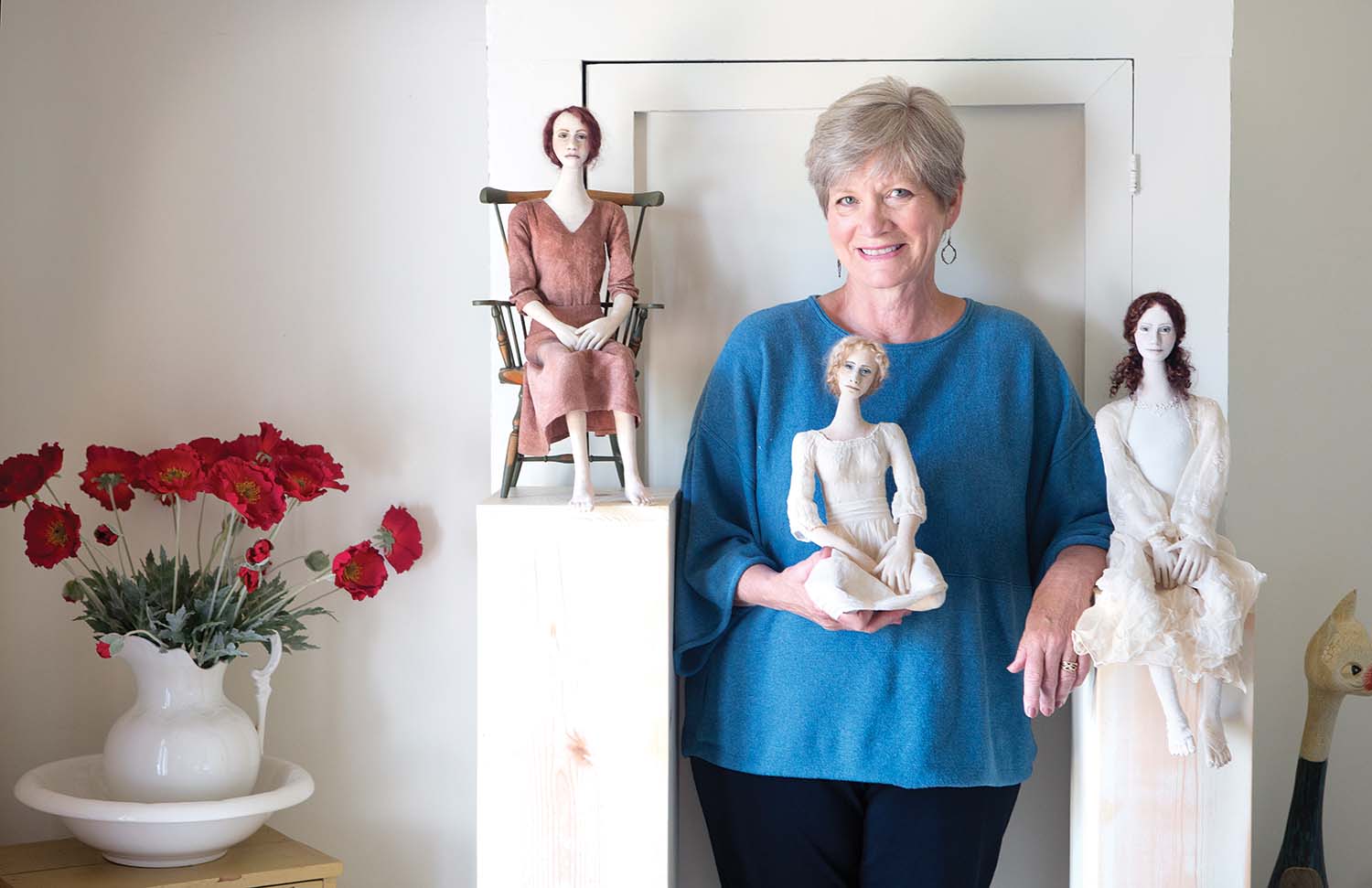
The intimacy of making art is nowhere better represented than in the tactile bond between hand and needle, needle and thread, thread and fabric. For Ann Hord-Heatherley, growing up in a North Carolina mill town 60 years ago, the relationship began early and strong. “For as long as I can remember, I’ve had the need to hold needle and thread,” says Hord-Heatherly. It’s a need that has produced a series of strikingly expressive art dolls prized not only for their masterful craftsmanship but for their emotional impact.
“Men seem to be drawn to the figures as much as women, and are some of my best customers,” says Hord-Heatherly, whose studio is located on a small farm in Weaverville. “My partner suggested we print T-shirts that say ‘Real Men Buy Dolls.’” Last year, Hord-Heatherly was inducted into the prestigious Southern Highland Craft Guild.
She started sewing even before she was in grammar school, and by the time she was six, she was learning to use her grandmother’s treadle-driven sewing machine even though her feet could barely reach the pedal. She had her own sewing machine two years later, and set her heart on becoming an art major someday. But the 1970s got in the way. “In the wisdom of a 17-year-old, I packed up my hot curlers and a week’s worth of clean underwear and ran away to be a hippie,” Hord-Heatherly recalls. “That didn’t work out too well.” By the time the college opportunity came around again, she says, “I had a shaky marriage and a two-year-old son. An art career seemed out of reach.”
With daycare and rent as top priorities, she got practical, and her eventual path as a mental-health nurse was a satisfying choice. Still, fabric and needle and thread held a central place in her life, with Hord-Heatherly taking turns with her sister and a close friend hosting weekends together at home making art. “My son referred to them as ‘Mother Goddess’ weekends,” says Hord-Heatherly. “We explored all kinds of quilting, dying, surface design.” It was the friend who introduced her to the work of Susanna Oroyan, who’d become nationally known for her art dolls and had written books on the subject. “I was immediately hooked.”

The farm where she works had been in her partner’s family for generations, but was neglected for 40 years. Rejuvenated and tended, it’s now home to five angora goats, 12 hens, three cats, and two dogs who guard the other animals. Mohair from the goats and feathers from the chickens find their way into Hord-Heatherly’s dolls. She begins each new figure by sculpting the head and facial features from air-dried modeling clay, which is then loosely covered with tea-dyed cloth. “I use color pencils to define, shade and highlight the features,” the maker explains. “Most everything else is sewed using vintage hand-dyed fabrics.” The figures can be as much as two feet tall or as diminutive as six inches.
The dolls, who are all given names, are a way for Hord-Heatherly to process her own life experiences: from her childhood years in the rural mountain South to the challenges of being a single mother. One doll, for example, reflected Hord-Heatherly’s disappointment at realizing that a college art degree was impossible; another her restlessness to abandon her country-girl roots for what she imagined to be a more exciting life in the city. She collects photos, particularly vintage portraits of Appalachian women, to help capture the facial expressions and body postures that give her dolls such expressive intimacy. She says she does very little sketching other than a rudimentary drawing for proportions. “I try to use only items that I make myself or natural materials from the farm,” she adds.
The dolls are a unique art form that catch many viewers by surprise on first encounter, and although they’re drawn from Hord-Heatherly’s own background, they speak to something universal, of hope and longing, self-reliance and compassion, and of the kind of determination that made a six-year-old girl reach for the heavy metal treadle of an old-fashioned sewing machine. “In spite of all that early experience, I was never great at sewing,” she claims. “My grandmother would hover around nervously, just sure I was going to sew right through my finger. So far, I haven’t.”
Ann Hord-Heatherley’s studio is included on this fall’s Weaverville Art Safari studio tour: Saturday, November 4 and Sunday, November 5, 10am-5pm. Visit weavervilleartsafari.com for details. The artist’s work is online at squareup.com/store/out-in-jupiter-farm.

Your work is lovely, Ann.